Volume 28.2
May–August 2025
Full table of contents
ISSN: 1094-8074, web version;
1935-3952, print version
Recent Research Articles
See all articles in 28.2 May-August 2025
See all articles in 28.1 January-April 2025
See all articles in 27.3 September-December 2024
See all articles in 27.2 May-August 2024
Interested in submitting a paper to Palaeontologia Electronica?
Click here to register and submit.
Article Search
FIGURE 1. Location of northern Estonia. The area of Arachnostega gastrochaenae Bertling localities in the Ordovician of northern Estonia is marked with red.

FIGURE 2. Stratigraphic distribution and abundance of Arachnostega gastrochaenae Bertling in the Ordovician gastropods of Estonia.

FIGURE 3. 1. Arachnostega gastrochaenae Bertling in a gastropod from Haljala Regional Stage (Sandbian), Aluvere Quarry, northern Estonia. GIT 399-948-1. 2. Arachnostega gastrochaenae Bertling in a gastropod from the Kunda Regional Stage (Darriwilian), Kunda Ojaküla, northern Estonia. GIT 404-355-1. 3. Arachnostega gastrochaenae Bertling in a bivalve from the Haljala Regional Stage (Sandbian), Aluvere Quarry, northern Estonia. GIT 399-1590-1. 4. Arachnostega gastrochaenae Bertling in a bivalve from the Haljala Regional Stage (Sandbian), Aluvere Quarry, northern Estonia. GIT 399-1601-1. 5. Arachnostega gastrochaenae Bertling in a cephalopod from the Uhaku Regional Stage (Darriwilian), Püssi, northern Estonia. GIT 695-12-1.

FIGURE 4.Arachnostega gastrochaenae Bertling in a hyolith from Kukruse Regional Stage (Sandbian), Harku, northern Estonia. GIT 696-15-1.

TABLE 1. Occurrence of Arachnostega in the Aluvere Quarry (Sandbian).
|
Taxa |
Total number of specimens |
Number of specimens with Arachnostega |
|
Gastropoda |
506 |
60 (12%) |
|
Bivalvia |
106 |
28 (26%) |
|
Cephalopoda |
70 |
13 (19%) |
|
Hyolitha |
16 |
3 (19%) |
TABLE 2. Distribution of Arachnostega in gastropods from the Ordovician (global stages) of Estonia.
|
Stage |
Total gastropods |
Gastropods with Arachnostega |
|
Katian |
282 |
8 (3%) |
|
Sandbian |
765 |
85 (11%) |
|
Darriwilian |
93 |
16 (17%) |
TABLE 3. Arachnostega diameter in gastropods in the Ordovician of Estonia.
|
Stage |
Arachnostega burrows diameter in gastropods |
|
Katian |
0.35-1.14 mm (N=7, Mean 0.55, sd 0.28) |
|
Sandbian |
0.22-1.00 mm (N=37, Mean 0.57, sd 0.23) |
|
Darriwilian |
0.24-1.37 mm (N=15, Mean 0.76, sd 0.34) |
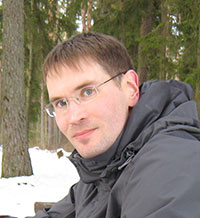 Olev Vinn
Olev Vinn
Department of Geology
University of Tartu
Ravila 14A
50411 Tartu
Estonia
olev.vinn@ut.ee
Olev Vinn graduated in geology at the University of Tartu in 1993. Vinn holds an M.Sc. degree in paleontology and stratigraphy from the University of Tartu in 1995 and a Ph.D. degree in geology from the same university in 2001. From 2001 to 2007, Vinn worked as a Researcher, and a Senior Researcher at the Department of Geology, University of Tartu since 2007. Vinn is a Member of the Paleontological Association and the Paleontological Society. Vinn's main research interests are (1) tube ultrastructure and evolution of biomineralization in annelid tubeworms; (2) biological affinities, shell structure, and evolution of problematic tubicolous fossils; (3) bioerosion and biofouling, paleoecology and evolution; (4) evolution of symbiosis and predation.

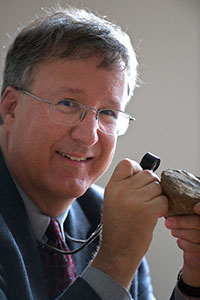 Mark A. Wilson
Mark A. Wilson
Department of Geology
The College of Wooster
Ohio, 44691
USA
mwilson@wooster.edu
Mark Wilson is the Lewis M. and Marian Senter Nixon Professor of Natural Sciences and Geology at The College of Wooster in Wooster, Ohio, USA. He received his PhD in paleontology from the University of California, Berkeley, and has been teaching and researching for over 30 years at Wooster. His research interests include the evolution of marine sclerobionts (organisms that live on hard substrates), bryozoan paleoecology and systematics, trace fossils, and carbonate petrography (especially hardground development).

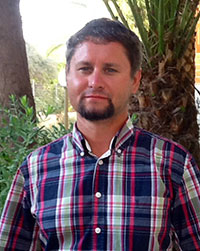 Michał Zatoń
Michał Zatoń
Department of Palaeontology & Stratigraphy
University of Silesia
Będzińska 60
41-200 Sosnowiec
Poland
mzaton@wnoz.us.edu.pl
Michał Zatoń earned his PhD in 2007 studying Middle Jurassic ammonites. In 2013 he received his habilitation degree (DSc) after research on selected problems of hard substrate biotas. Currently he is an associate professor on the Faculty of Earth Sciences, University of Silesia in Sosnowiec, Poland, where he is involved in both teaching and research. His main research is still focused on hard substrate biotas, mainly microconchid tubeworms, cyclostome bryozoans and mobile hard substrate paleoecology. His other research interests include taphonomy, predator-prey interactions and Devonian paleoenvironments during the times of biotic crises.

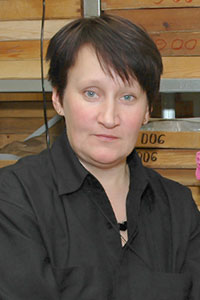 Ursula Toom
Ursula Toom
Institute of Geology
Tallinn University of Technology
Ehitajate tee 5
Tallinn
Estonia
ursula.toom@ttu.ee
I was born in 1961, in Estonia. I studied geology in the University of Tartu and graduated in 1984. In the same year I started working in the Institute of Geology in Tallinn. For the past 15 years I have been working as the chief curator in the Department of Collections. I have contributed to creating the SARV Database for the geocollections of Estonia. I have also devoted a lot of time into teaching and the popularization of geology.

The trace fossil Arachnostega in the Ordovician of Estonia (Baltica)
Plain Language Abstract
Arachnostega is a Cambrian to Quaternary net-like burrow system found on the surface of steinkerns from a variety of marine shells. The trace-maker was apparently a deposit-feeder that mined the sediment layer adjacent to the inner surface of the shells. Arachnostega is common in steinkerns throughout the Middle and Upper Ordovician of the paleocontinent of Baltica. Since Baltica experienced a significant climate change in the Ordovician (from temperate to tropical), we can observe whether climate and its associated biological, sedimentary and geochemical factors influenced the organisms that made Arachnostega. This trace fossil does show a significant decline in abundance from the Middle through the Upper Ordovician in Baltica.
Resumen en Español
La traza fósil Arachnostega en el Ordovícico de Estonia (Báltica)
En moldes internos ("steinkerns") de bivalvos, cefalópodos, gasterópodos e hiolitos del Ordovícico de Báltica se encuentran madrigueras asignadas al icnogénero Arachnostega Bertling, 1992. La abundancia de Arachnostega disminuyó significativamente en Báltica durante el Ordovícico. Esta traza fue más abundante durante el Darriwiliense (en el 17% de moldes internos de gasterópodos), algo menos abundante en el Sandbiense (en el 11% de moldes internos de gasterópodos) y menos abundante en el Katiense (en el 3% de moldes internos de gasterópodos). Este cambio en la abundancia de Arachnostega se correlaciona bien con el cambio climático regional (de templado a tropical) durante este intervalo, junto con los consecuentes cambios en el ambiente sedimentario, la geoquímica y la biota. Arachnostega era selectivo con respecto al sustrato, prefiriendo los bivalvos a los gasterópodos. Este icnogénero se encuentra sólo en el Ordovícico Medio y Superior de Estonia y está ausente en el Ordovícico Inferior.
Palabras clave: trazas fósiles; madrigueras; gusanos; moldes internos; rocas carbonatadas
Traducción: Enrique Peñalver
Résumé en Français
La trace fossile Arachnostega de l'Ordovicien de l'Estonie (Baltique)
A l'Ordovicien de la Baltique, des terriers attribués à l'ichnogenre Arachnostega Bertling 1992 se produisent dans des steinkerns de bivalves, de céphalopodes, de gastéropodes et de hyolithides. L'abondance d'Arachnostega diminue de façon significative au cours de l'Ordovicien de la Baltique. C'était le plus abondant dans le Darriwilien (17% des steinkerns de gastéropodes), un peu moins abondant dans le Sandbien (11% des steinkerns de gastéropodes) et moins abondant dans le Katien (3% des steinkerns de gastéropodes). Ce changement d'abondance d'Arachnostega est bien corrélée avec le changement climatique régional (de régions tempérées à tropicales) pendant cet intervalle, avec des changements résultants dans l'environnement sédimentaire, dans la géochimie et dans le biote. Arachnostega était sélectifs en substrat et préférés les bivalves aux gastéropodes. Arachnostega ne se produit que dans l'Ordovicien moyen et supérieur de l'Estonie et est absent dans l'Ordovicien inférieur.
Mots-clés: traces fossiles; terriers; vers; steinkern; roches carbonatées
Translator: Kenny J. Travouillon
Deutsche Zusammenfassung
Das Spurenfossil Arachnostega aus dem Ordovizium von Estland (Baltikum)
Im baltischen Ordovizium treten Grabgänge in Steinkernen von Muscheln, Cephalopoden, Gastropoden und Hyolithiden auf, die der Ichnogattung Arachnostega Bertling, 1992 zugeschrieben werden. Die Häufigkeit von Arachnostega nahm auf dem Baltikum während des Ordiviziums signifikant ab. Sie war am höchsten im Darriwilium (17% der Gastropoden-Steinkerne), etwas weniger hoc him Sandbium (11% der Gastropoden-Steinkerne) und am wenigsten im Katium (3% der Gastropoden-Steinkerne). Dieser Wechsel bei der Arachnostega-Häufigkeit steht in enger Beziehung mit dem regionalen Klimawechsel (von gemäßigt zu tropisch) während dieser Zeitspanne zusammen mit daraus resultierenden Veränderungen im Sediment, der Geochemie und der Biota. Arachnostega war Substrat-selektiv und bevorzugte Bivalven und Gastropoden. Arachnostega kommt nur im mittleren und oberen Ordivizium des Baltikums vor und tritt im unteren Ordovizium nicht auf.
Schlüsselwörter: Spurenfossilien; Grabgänge; Würmer; Steinkern; Karbonatgestein
Translator: Eva Gebauer
Arabic
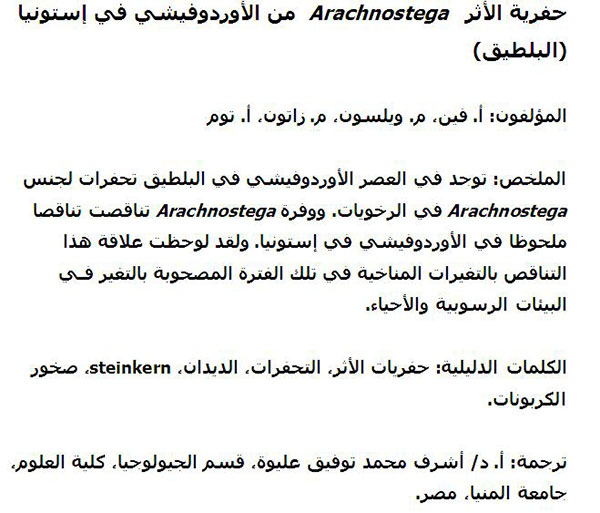
Translator: Ashraf M.T. Elewa
-
-
PE: An influential journal
 Palaeontologia Electronica among the most influential palaeontological journals
Palaeontologia Electronica among the most influential palaeontological journalsArticle number: 27.2.2E
July 2024





 A Review of Handbook of Paleoichthyology Volume 8a: Actinopterygii I, Palaeoniscimorpha, Stem Neopterygii, Chondrostei
A Review of Handbook of Paleoichthyology Volume 8a: Actinopterygii I, Palaeoniscimorpha, Stem Neopterygii, Chondrostei